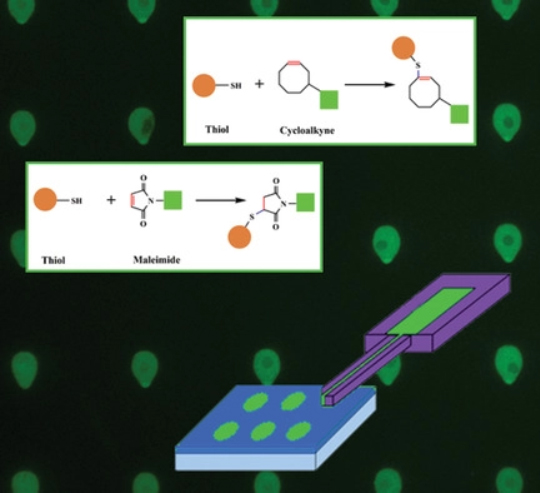
A Comparative Study of Thiol‐Terminated Surface Modification by Click Reactions: Thiol‐yne Coupling versus Thiol‐ene Michael Addition
-
Author:
S. M. M. Dadfar, S. Sekula‐Neuner, V. Trouillet, M. Hirtz
-
Source:
Adv. Mater. Interfaces 5 (2018) 1801343
- Date: 2018
-
Two quick and efficient, metal catalyst free conjugation routes for the covalent attachment of functional compounds to functionalized surfaces by scanning probe lithography methods are compared in the presented work. The studied methods are thiol‐yne coupling (TYC) and thiol‐ene Michael addition (TEMA). First, the surface of hydroxyl‐terminated glass is thiolated using (3‐mercaptopropyl)trimethoxysilane (MPTMS). Then, in the distinct experiments, the thiol‐terminated surface is spotted by microchannel cantilever spotting with different fluorescent and nonfluorescent inks containing cycloalkyne (dibenzocyclooctyne (DBCO)) or alkene (maleimide) groups. Experiments with different fluorophores show that both routes are successful in coupling functional moieties to the surface in a short time and low temperature. Comparing the protein binding experiments for biotin‐DBCO and biotin‐maleimide reveals a higher surface density of immobilized biotin via the TEMA route. The results from this study are applicable in design and fabricating of biosensors, appropriate for protein detection and other biomedical/biological applications.
